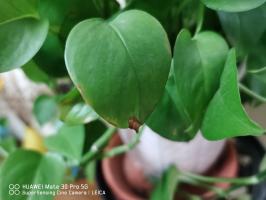Introduction
Plants are capable of converting light energy from the sun into chemical energy through a process called photosynthesis. This process occurs in plant cells, which are highly specialized structures responsible for carrying out various biological processes necessary for the survival of the plant. However, not all parts of a plant cell are involved in capturing light energy. So, what part of a plant cell captures light energy? Let's find out!
Chloroplasts
The part of a plant cell responsible for capturing light energy is called a chloroplast. Chloroplasts are essentially the "powerhouses" of the plant cell, as they contain the necessary pigments and proteins to carry out photosynthesis. The main pigment present in chloroplasts is chlorophyll, which is responsible for absorbing light energy from the sun. The other proteins and enzymes present in chloroplasts then use this energy to convert carbon dioxide and water into glucose, which the plant can use as a source of energy.
Structure of Chloroplasts
Chloroplasts are surrounded by two membranes, with an intermembrane space in between them. The inner membrane encloses the stroma, which is where the chlorophyll and other pigments are located. The stroma also contains the enzymes necessary for the light-dependent and light-independent reactions, which are the two stages of photosynthesis. Additionally, there are stacked thylakoid membranes inside the stroma, which contain the photosystems involved in capturing light energy.
Function of Chloroplasts
The main function of chloroplasts is to capture light energy and convert it into chemical energy through photosynthesis. This process allows plants to produce their own food and oxygen, which is essential for their survival. Without chloroplasts, plants would not be able to carry out photosynthesis and would eventually die. Additionally, chloroplasts play a role in regulating the plant's internal environment, as they are involved in various metabolic processes that ensure the plant is functioning properly.
Conclusion
In conclusion, the part of a plant cell responsible for capturing light energy is the chloroplast. Chloroplasts are specialized structures that contain the pigments and proteins necessary for photosynthesis, and without them, plants would not be able to survive. Understanding the structure and function of chloroplasts is essential for understanding how plants produce their own food and oxygen, and how they play a critical role in maintaining our planet's ecosystem.

 how many times do yo...
how many times do yo... how many planted tre...
how many planted tre... how many pine trees ...
how many pine trees ... how many pecan trees...
how many pecan trees... how many plants comp...
how many plants comp... how many plants can ...
how many plants can ... how many plants and ...
how many plants and ... how many pepper plan...
how many pepper plan...





























